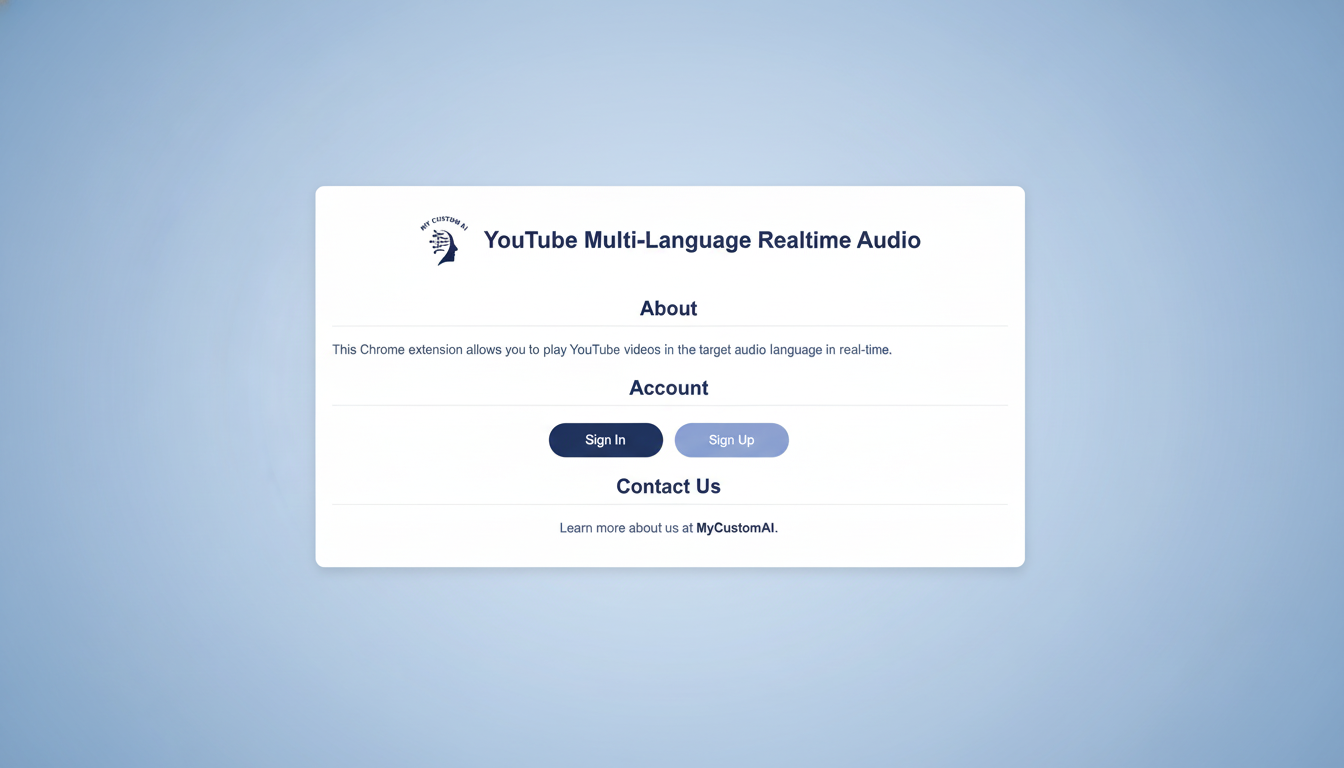YouTube is rolling its multi-language audio feature out to all creators, wrapping a two-year pilot and unleashing efficient dubbing around the globe. The expansion is a means for any channel to attach all of its audio tracks to a single video, the idea being that they can finally watch content and listen to it in their preferred language, without the need to track down separate regional uploads.
What the feature does
Multi-language audio allows creators to upload extra voice tracks or use YouTube’s AI-assisted translation tools to generate them. Viewers can change the language in the settings menu, and the track can be automatically selected based on the viewer’s language and location on mobile, desktop and TV apps, according to YouTube.

Originally, creators hired third-party studios to write captions for their videos. On the pilot, YouTubte tested out an auto-dubbing workflow that used Google’s Gemini model to keep tone and pacing rather than cranking out a dull, robotic read. Creators maintain complete control: they can “listen in” and edit or replace the AI generated track with a human performance at any time.
Results so far, and creator examples
YouTube says that channels that experimented with multi-language audio experienced significant audience growth. Resource-wise, videos that were tested garnered more than a quarter of the watch time from non-primary language tracks, according to internal data shared with testers. Case in point: English chef Jamie Oliver’s channel saw views explode by a magnitude after adding dubbed audio, which demonstrates how evergreen programming formats such as recipes benefit from localization.
Early adopters during the pilot phase included major creators who are known for running separate language channels, like MrBeast and Mark Rober. Putting all languages together in a single upload makes distribution, analytics and community management more manageable — and also means viewers get a single URL and comment thread.
Why it’s important for reach — and revenue
Language is one of the largest barriers to discovery. Dubbed content can open up regions where subtitles lag — particularly the small screen and hands-busy media of cooking, gaming, fine motor skills or fitness. For creators, the shift can extend the value of their catalogs: Older videos can be resurfaced with new language tracks and re-exposed to audiences who never saw the original.
There are monetization implications, too. A solitary top-performing video that includes audio in, say, Spanish, Hindi, Portuguese or Arabic, might reach more viewers and attract more diverse advertiser interest. Media buyers are becoming more interested in contextual relevance, and language-consistent advertisements along with localised audio can enhance that suitability and even help in raising effective CPMs in certain markets.

How creators can start
Creators can add tracks to a video in YouTube Studio and add additional audio files for supported languages. For those who like turnkey, YouTube offers an AI-phonic approach where you can use their AI-dub (powered by Google’s Aloud technology and Gemini), review and tweak translations and then confirm pronunciation or timing on your way to publishing.
Best practice is to localize past voice. That might mean modifying on-screen text, calls to action and product names, then realigning captions and descriptions to the new audio content. Reliable design between languages helps create trust and minimizes viewer drop-off when a user switches tracks in the middle of a video.
Quality, rights, and disclosure.
As AI voice tools gain power, consent and clarity matter. YouTube requires creators to have rights to any voices used in their videos and has broader policies around synthetic media disclosure. Channels using AI-generated voices should disclose appropriately and avoid impersonation, while maintaining records of talent agreements for human dubbing. Accuracy is also a creative issue. Literal translations can miss cultural nuance or humor. Many successful pilots used a hybrid approach—machine translation followed by human editing—to get idioms, brand names, and safety disclaimers right. Investing in script adaptation typically yields better retention and fewer viewer complaints.
Discovery boosts: localized thumbnails.
Alongside audio, YouTube has been testing multi-language thumbnails that render text in a viewer’s preferred language. Early testers report stronger click-through rates when the thumbnail and title match the audio track—a logical pairing that reduces friction before the first second of watch time. For creators, the playbook is straightforward: match the promise in the thumbnail, the metadata in the description, and the voice in the video. When those elements are aligned across languages, the algorithm has clearer signals and viewers know they’re in the right place.
The bigger picture
Bringing multi-language audio to every channel nudges YouTube from a predominantly subtitle-first platform to a truly localized video network. It reduces the need for duplicate uploads, takes friction out of international expansion, and sets a higher bar for quality dubbing at internet scale.
That is one practical lever for creators weighing growth strategies: making what already works speak more languages. With AI reducing the barrier to entry, and human editing maintaining authenticity for quality, the benefits of localization are no longer only available to the biggest studios.

